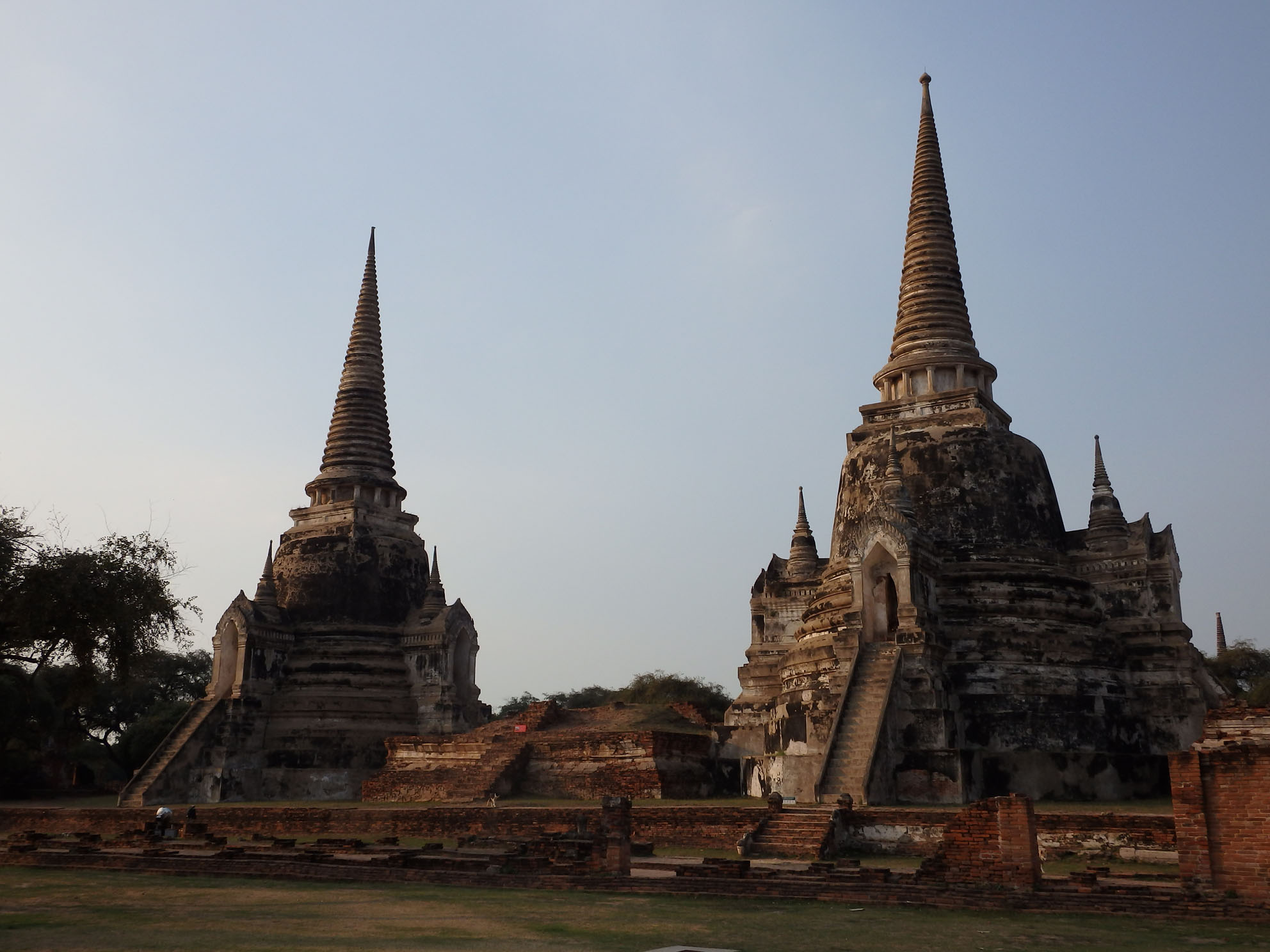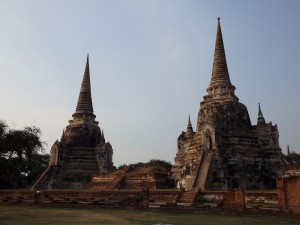 Kicking off with some basics, Ayutthaya (officially Phra Nakhon Si Ayutthaya) is actually a province 80km or 1.5hrs north of Bangkok and is covered by World Heritage listing by UNESCO, located on an island surrounded by three rivers.
Kicking off with some basics, Ayutthaya (officially Phra Nakhon Si Ayutthaya) is actually a province 80km or 1.5hrs north of Bangkok and is covered by World Heritage listing by UNESCO, located on an island surrounded by three rivers.
Ayutthaya, was the seat of the Kingdom of Siam and a prosperous trading port from the 14th century until it was razed by the Burmese in 1767. The old city ruins, with Buddhist temples, monasteries and statues, now form Ayutthaya Historical Park.
Somehow after being in Thailand for some time, Ayutthaya alluded me but I have finally made the pilgrimage to the old city after much anticipation. On a day trip to Bangkok to organise my Thai Language course, we headed north on the Kawasaki, out of bustle of the Bangkok traffic and onto the open highway.
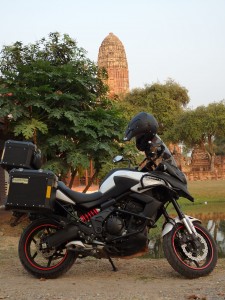 What I was expecting to see, was a combination of Chiang Mai’s city ruins, with perhaps the visual impact of Cambodian ruins.
What I was expecting to see, was a combination of Chiang Mai’s city ruins, with perhaps the visual impact of Cambodian ruins.
Well I got what I was wishing for. The Historical Park sites on an area of 289 ha. Extremely large, many tourists take the opportunity to rent bicycles to allow them to cover the who area with more ease.
Another way to get around the scatterings of outer lying temples is to hire a tuk tuk for 150-200THB per hour depending on your negotiating skills.
With the area founded c. 1350, Ayutthaya became the second Siamese capital after Sukhothai. It was unfortunately destroyed by the Burmese in the 18th century.
Its remains, characterized by the prang (reliquary towers) and gigantic monasteries, give an idea of its past splendor.
Ayutthaya is usually visited as part of a packaged day trip out of Bangkok, which usually includes stops at the Bang Pa In palace as well as the Bang Sai royal arts center.
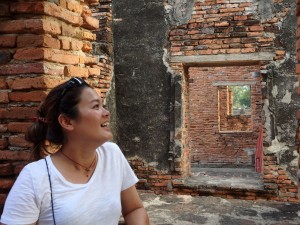 You can easily spend a day exploring the whole park, or simply have a quick stop and still feel fulfilled by what you will have seen.
You can easily spend a day exploring the whole park, or simply have a quick stop and still feel fulfilled by what you will have seen.
Some of the areas require you to pay a small entry fee of 40-50THB for a farang, while other areas are accessible from the roadway for free.
The park is relatively low pressure compared to many other tourist places in Thailand. Being close to Bangkok, Ayutthaya City is very hot, water is available at every turn, so keeping yourself hydrated while you explore is a must.
Being able to photograph the gigantic monasteries as the sun sets gives a whole new perspective to the place, only to be outdone by visiting the outer perimeter and shooting some night photos when all of the temples are light by spotlights bringing out the magnificent shadows and details turning it into quite an eerie place.
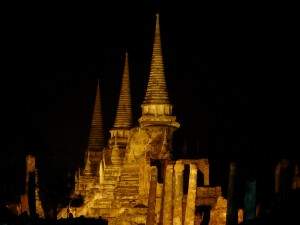 As with any religious location in Thailand, showing respect for the Thai’s and their beliefs is a must. No standing or sitting on the base of the Chedi, no climbing on the scorched headless Buddha statues or walls.
As with any religious location in Thailand, showing respect for the Thai’s and their beliefs is a must. No standing or sitting on the base of the Chedi, no climbing on the scorched headless Buddha statues or walls.
All of this seems quite logical, but there are always plenty of people wanting that unique photo opportunity who push the boundaries.
Climbing the steps of the Chedi is allowed, but be careful when you do, the steps are old, broken and there are no handrails. If you are uneasy on your feet or scared of heights stay away from them.
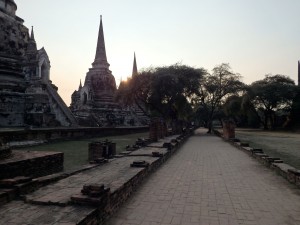 Tucked away in the centre of the ruins is a market stall area, all with makeshift undercover walkways.
Tucked away in the centre of the ruins is a market stall area, all with makeshift undercover walkways.
The usual foods are available to fill your belly as you take a break away from the hot sun.
Taking a guided tour would give you a better understanding and appreciation of the site from the perspective of the Thai’s. Many Thai’s in the area are still quite bitter at the Burmese for their destruction of the site.
River boats run in the evening where you can spend a couple of hours eating a meal and enjoying the sights lit by spotlight along the river banks.
Check with local tour operators for this opportunity. Restaurants also sit in many locations along the rivers edge, but being so close to Bangkok, and being quite the tourist hub, expect to pay double what you may pay in a small nondescript town.
[sm-youtube-subscribe]
[embedyt]https://www.youtube.com/watch?v=GiFgTqwHOEM[/embedyt]
[embedyt]https://www.youtube.com/watch?v=1D_fsfl812g[/embedyt]
